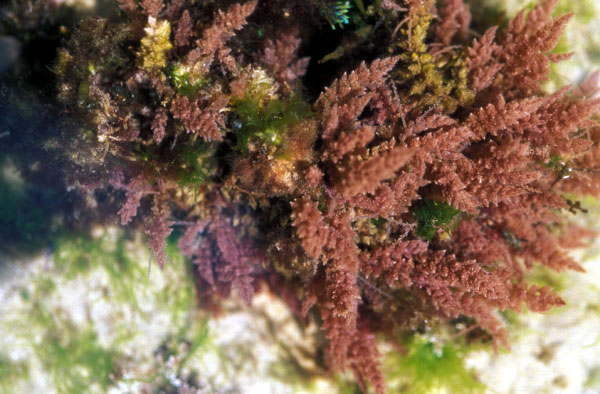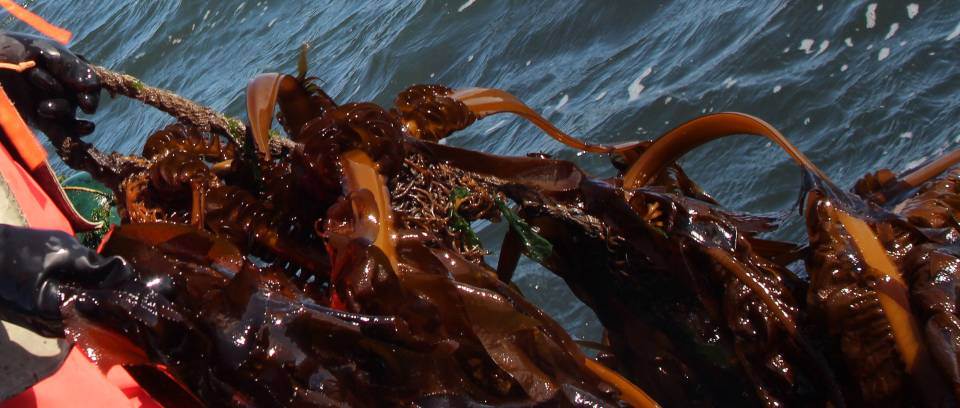Our team has initiated a selective breeding program forregional strains of sugar kelp,Saccharina latissima, toimprove the competitiveness of kelp farming in the UnitedStates. Within our breeding program, we also include anendemic putative species,Saccharina angustissima, locallyreferred to as skinny kelp. We crossed uniclonal gameto-phyte cultures derived from 37 wild-collected blades rep-resenting five sugar kelp strains and one skinny kelp strainto produce 104 unique crosses. Each cross was outplantedon a near-shore research farm located in the Gulf of Maine(GOM). After the first farming season, our results indicatedthat sugar kelp and skinny kelp were interfertile, and pro-duced mature and reproductively viable sporophytes. Mor-phological traits of individual blades varied depending onthe parental contribution (sugar vs. skinny), with significantdifferences found in progeny blade length, width, thickness,and in stipe length and diameter. Despite these differences,wet weight and blade density per plot showed no statisticaldifferences regardless of the cross. Given their publishedgenetic similarity and their interfertility shown here,S. angustissimaandS. latissimamay not be different species, and may each contribute genetic diversity to breeding pro-grams aimed at meeting ocean farming and market needs.
Digital library
-
-
Key questions that will determine the future prospects for open ocean aquaculture (OOA) are the attitude of government, the technology that is developed to enable development, and the market for seafood products.
-
The general distribution of seaweeds along the east and west coasts of India, Lakshadweep and Andaman-Nicobsr islands is given. The standing crop of seaweeds in all these areas is estimated as more than 1,00,000 tons (wet wt.). The quantity of seaweeds growing in the shallow water areas (0 to 4.0 m depth) of southwest coast of Tamil Nadu was estimated as 22,000 tons (wet wt.) in an area of 17,125 ha and from deep waters (5.0 to 22.0 m depth) was 75,372 tons (wet wt.) from an area of 1,863 sq.km. Monthly data were collected during the four years 1989,1990,1992 and 1993 from different seaweed ,landing Centres in Tamil Nadu coast on the quantity of seaweeds harvested from the natural seaweed beds.
-
In rapidly developing countries, where large sections of the population are highly dependent on marine resources, coastal livelihoods are vulnerable to sudden shocks and long-term change. National policy can attempt to mitigate this vulnerability within a multi-level framework by addressing the three aspects of vulnerability (exposure, sensitivity, adaptive capacity) through well-documented interventions. This article reviews the Indonesian policy framework for coastal and marine policy interventions that either directly or indirectly address different dimensions of coastal livelihood vulnerability. The findings show that the policy environment for addressing coastal livelihood vulnerability is heavily based on developing adaptive capacity and to a certain extent sensitivity without adequately addressing exposure, the initial cause of vulnerability. In addition, the complexities and inconsistencies within the Indonesian governmental structures, as well as more general issues of funding gaps and poor coordination, mean that policies created at national level rarely filter down to provide the intended benefits to coastal communities. It is recommended that practitioners and policymakers engage in a more cohesive and balanced approach to addressing livelihood vulnerability in coastal management by focusing more on the causes of the disease, exposure, rather than healing just the symptoms.
-
This study provides an overview of the multi-sectoral coastal aquaculture development in Zanzibar (Tanzania) over the last thirty years based on empirical evidence from interviews, field observations, policy reports and literature reviews. Despite the immense potential of aquaculture for food and livelihoods, only seaweed farming has so far established into commercial-scale production. This activity is dominated by women and became widespread in the early 1990s as a small but regular source of income. However, seaweed farming constraints such as frequent seaweed die-offs, as well as economic and institutional constraints inhibit its development. Other types of aquaculture activities such as fish farming, mud crab fattening, half-pearl farming, sea cucumber farming and sponge and coral cultures are under development with limited production or in experimental stages. Common constraints among these activities are economic limitations, lack of technical infrastructure and skills, small and irregular production, and limited trade and market availabilities. At the same time, there is a lack of sufficient management and monitoring systems, while there are no formal regulations or clear strategies to boost aquaculture at the national level. In addition, new aquaculture initiatives are often dominated by donor-driven projects instead of local entrepreneurships. This situation does not encourage engagement in aquaculture and thus such activities are outcompeted by other already established sectors (e.g. agriculture and fisheries). We conclude that aquaculture has great potential to evolve due to high environmental capacity. Nevertheless, achieving profitable production and a stronger commitment within local communities, as well as developing effective mariculture governance through support mechanisms and clear strategies to boost the sector at the national level, are essential for sustainable mariculture development in Zanzibar.
-
Coastal aquaculture of seaweeds and prawns has developed in Tanzania during the past two decades. Farming of Eucheuma seaweeds commenced in 1989 along the east coast of Zanzibar and it has since expanded to other areas. This form of aquaculture does not pollute the environment with feeds, wastes or other chemicals, although there are some negative interactions causing inhibition of surrounding biota, but which appear to be relatively mild. Monoculture may result in some self-inhibition and disease vulnerability over time. The socio-economic impacts of seaweed farming was initially overwhelmingly positive, providing income to women from relatively poor remote villages. Annual production reached 7000 tonnes, constituting an important earning of foreign exchange. However, monopoly control by a few international corporations recent years has led to reduced prices being paid to producers. Aquaculture of penaeid prawns has also been attempted in Tanzania. A huge project was proposed for the Rufiji mangrove delta, but met strong opposition from local communities, government managers, scientists, journalists, lawyers and environmental NGOs. Although it was clear that the consequences of the project would have been seriously deleterious, the government approved it. Conclusions are drawn from the lessons learned through Tanzanian and international experiences, and suggestions are put forward concerning principles for the development of more ecologically viable and socially just aquaculture development.
-
Commercially valuable sea cucumbers are potential co-culture species in tropical lagoon environments, where they may be integrated into established aquaculture areas used for seaweed farming. In the current study, wild-caught juvenile sea cucumbers, Holothuria scabra, and red seaweed Kappaphycus striatum were co-cultured on Zanzibar, United Republic of Tanzania. Sea cucumbers (97 g +- 31 SD, n = 52) were cultured in mesh enclosures at initial cage stocking densities of 124 +- 21 SD and 218 +- 16 SD g m^-2 under seaweed culture lines. Over 83 days, individual growth rate (1.6 g d^-1 +- 0.2 SD) of sea cucumbers at low stocking density was significantly higher (v2 = 8.292, d.f. = 1, P = 0.004) than at high-stocking density (0.9 g d^-1 +- 0.1 SD). Seaweed individual growth rates [6.27 (+-0.3 SE) g d^-1 ] were highest in co-culture with sea cucumber at low density but did not differ significantly from high sea cucumber density or seaweed monoculture treatments (v2 = 3.0885, d.f. = 2, P = 0.2135). Seaweed growth varied significantly (v2 = 35.6, d.f. = 2, P < 0.0001) with sampling period, with the final sampling period resulting in the highest growth rate. Growth performance for seaweed and sea cucumbers (v2 = 3.089, d.f. = 2, P = 0.21 and v2 = 0.08, d.f. = 1, P = 0.777 respectively), did not differ significantly between monoculture and co-culture treatments, yet growth in co-culture was comparable with that reported for existing commercial monoculture. Results indicate H. scabra is a highly viable candidate species for lagoon co-culture with seaweed. Co-culture offers a more efficient use of limited coastal space over monoculture and is recommended as a potential coastal livelihood option for lagoon farmers in tropical regions.
-
The increasing use of seaweeds in European cuisine led to cultivation initiatives funded by the European Union. Ulva lactuca, commonly known as sea lettuce, is a fast growing seaweed in the North Atlantic that chefs are bringing into the local cuisine. Here, different strains of Arctic U. lactuca were mass-cultivated under controlled conditions for up to 10 months. We quantified various chemical constituents associated with both health benefits (carbohydrates, protein, fatty acids, minerals) and health risks (heavy metals). Chemical analyses showed that long-term cultivation provided biomass of consistently high food quality and nutritional value. Concentrations of macroelements (C, N, P, Ca, Na, K, Mg) and micronutrients (Fe, Zn, Co, Mn, I) were sufficient to contribute to daily dietary mineral intake. Heavy metals (As, Cd, Hg and Pb) were found at low levels to pose health risk. The nutritional value of Ulva in terms of carbohydrates, protein and fatty acids is comparable to some selected fruits, vegetables, nuts and grains.
-
e investigated the effects of halogenated furanones from the red alga Delisea pulchra on colonisation of surfaces by marine bacteria. Bacterial abundance on the surface of D. pulchra, assessed using scanning electron microscopy (SEM),was significantly lower than on the surfaces of 3 co-occur- ring algal species, all of which lack furanones.There was also a strong inverse correlation between bac- terial abundance and furanone content (previously determined) for different sections of the thallus of D. pulchra, consistent with inhibition of bacteria by furanones. Based on these observations we experi- mentally investigated inhibition of marine bacteria by furanones, initially testing the effects of crude extract of D. pulchra (about 5 0 % of which is furanones) on the growth of 144 strains of bacteria isolated from the surfaces of D.pulchra, nearby rocks, or a CO-occurringalga (Sargassum vestjtum) This crude extract did not strongly inhibit growth of these bacteria; 79% of the strains grew at 50 pg ml-' of crude extract, and 63% grew at 500 pg ml-'. Inhibition of growth that did occur was strongly source depen- dent, with bacteria isolated from rocks the least affected, and strains from D. pulchra the most. As inhi- bition of growth did not provide an adequate explanation for the inverse relationship between levels of furanones and bacteria abundance on D.pulchra, we proceeded to investigate the effects of these metabolites on other bacterial characteristics relevant to colonisation-attachment, swarming, and swimming. lndividual furanones or crude extract at natural concentrations strongly inhibited bacterial attachment in the laboratory and in the field. In laboratory assays, attachment of 3 strains isolated from rocks was much more strongly affected than that of 3 isolates from D. pulchra, in contrast to the pattern for growth inhibition. We also tested individual furanones against swimming and swarming of the same 6 bacterial isolates (3 from rocks, 3 from D. pulchra) used in the attachment assays. At least some fura- nones inhibited swarming or sulmming at non-growth-inhibitory concentrations for all isolates, again indicating specific effects against bacterial characteristics. As for attachment, there were significant dif- ferences in the responses of different isolates to furanones. We also found that the ability to swarm was widespread among these surface associated marine bacteria, suggesting that swarming may be ecolog- ically important in these systems. Overall, we found that the effects of furanones on bacteria varied a m o n g ( 1 ) f u r a n o n e s , ( 2 ) b a c t e r i a l p h e n o t y p e s , ( 3 ) d i f f e r e n t i s o l a t e s a n d ( 4 ) d i f f e r e n t s o u r c e s of i s o l a t i o n (e.g. rocks or algae). This differential inhibition of different bacterial isolates or phenotypes by fura- nones, as well as affecting overall bacterial abundance on the alga, should have strong effects on the species composition of the bacterial community on the alga's surface. The effects of furanones on spe- cific bacterial colonisation traits are discussed in the light of recent evidence demonstrating that fura- nones interfere with bacterial acylated homoserine lactone regulatory systems.
-
Although numerous algal products have antimicrobial activity, limited knowledge of metabolite localisation and presentation in algae has meant that ecological roles of algal natural products are not well understood. In this study, extracts of Asparagopsis armata had antibacterial activity against marine (Vibrio spp.) and biomedical (Escherichia coli, Pseudomonas aeruginosa and Staphylococcus spp.) strains. The major natural products in both life-history stages of A. armata (as determined by gas chromatography-mass spectrometry analysis [GC-MS]) were bromoform (0.58 to 4.3% of dry weight [DW]) and dibromoacetic acid [DBA] (0.02 to 2.6% DW), and each compound was active against these same bacteria. To resolve whether this antibiotic activity was ecologically rele- vant, we examined the localisation of metabolites in the specialised cells of A. armata and observed a delivery mechanism for the release of metabolites to the surface. Bromoform and DBA were sub- sequently quantified in the surrounding medium of laboratory cultures, establishing their release from the alga. In a novel ecological test of algal natural products, halogenated metabolites in A. armata were manipulated by omitting bromine from an artificial seawater medium. Significantly higher densities of epiphytic bacteria occurred on algae that no longer produced halogenated metabolites. Both bromoform and DBA were more active against bacteria isolated from algae lacking brominated metabolites than algae producing normal amounts of these compounds. Taken together, these results indicate that halogenated metabolites of A. armata may be important in reducing epiphytic bacterial densities.





